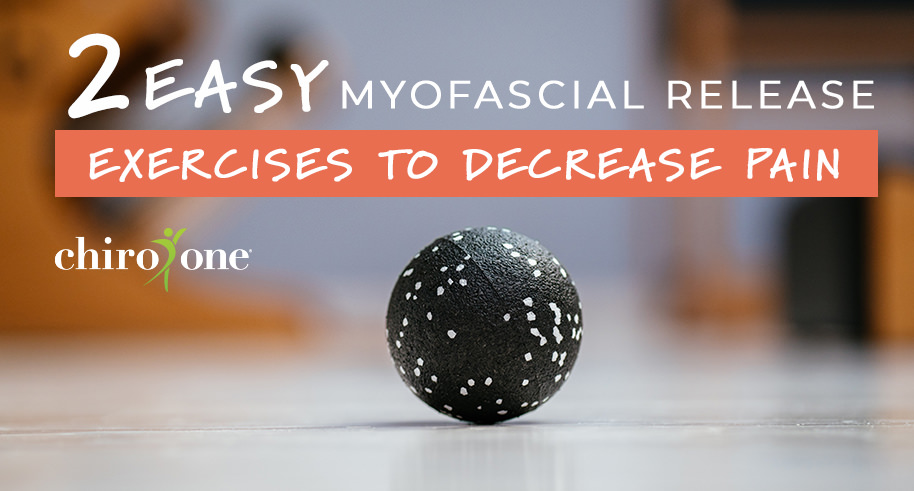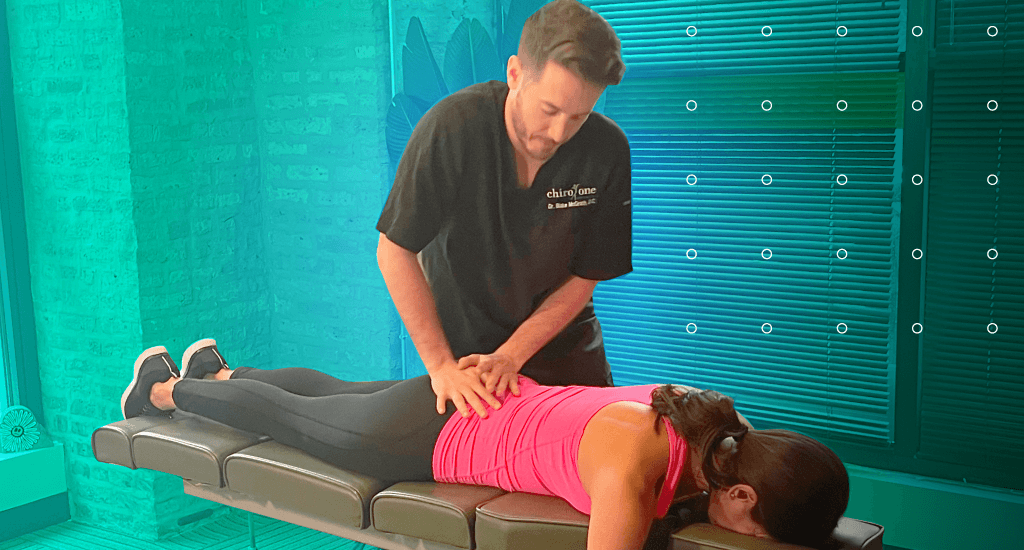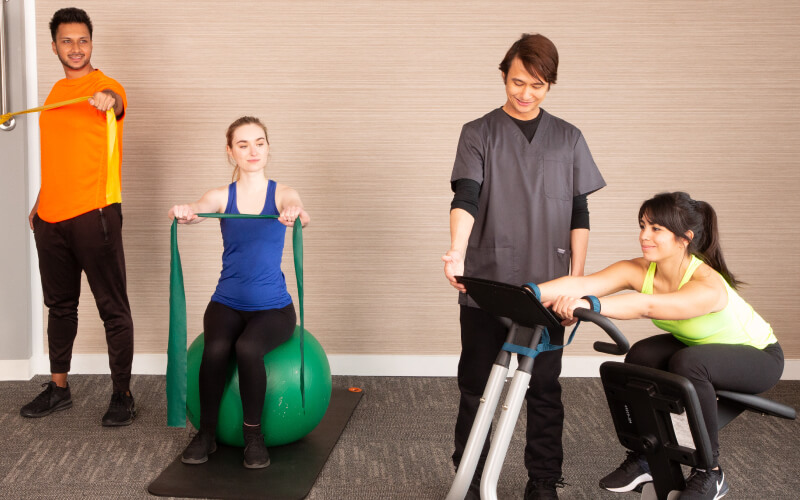
2 Easy-to-Apply Myofascial Release Exercises for Pain Relief
Tension in your connective muscle tissue (myofascia) can limit muscle and joint movement and cause pain. Here are two simple moves for relief.

A chiropractor for lower back pain is who you want to see if mild throbbing, annoying aching, sharp stabbing, or severe spasming are disrupting your days and nights — as they do for 31 million Americans every year. You want a treatment that’ll allow you to move like you used to — and that means minding your neuro-musculoskeletal health.
Your spine is quite a feat of engineering. It provides strength, support and flexibility to your upper body, which is why it’s so sensitive to pain and injury — and why decades of research show it responds exceptionally well to gentle, non-invasive chiropractic care. More and more Americans are seeking this proven alternative to medication and surgery, and it may help reduce our $50 billion annual back pain costs and lost productivity.
Can it help you to see a chiropractor for lower back pain?
The CDC says yes. The agency’s 2022 Clinical Practice Guidelines recommend spinal adjustments and therapeutic exercises for nonpharmacologic pain management, and encourages insurers and health systems to increase access to these evidence-based options.
But once you understand how your spine functions, what may cause it to dysfunction, and how chiropractic care has been proven to resolve pain, inflammation and misalignment, you’ll likely answer that question for yourself.
Your spine’s 33 vertebrae are stacked into three normal curves
Your spine is your body’s neurological and structural support center. Its 33 vertebrae are stacked into three normal curves: cervical (neck), thoracic (upper back), and lumbar (lower back).
When properly aligned, these curves follow an S-shaped pattern that enables flexibility, shock-absorption and weight distribution. Between each vertebrae lie rubbery cushions called intervertebral discs. Your ligaments hold your vertebrae together, stabilizing your spine, and protecting your discs.
Once your vertebrae become misaligned, they can exaggerate your spine’s curvature, causing back pain, limited joint movement, and decreased range of motion.
Most episodes of low-back pain are clinically acute — they last up to 4 weeks and often resolve on their own. Low-back pain that lasts between 4 and 12 weeks is subacute. If it lasts three months or longer, it’s chronic and requires immediate attention.
Seeing a chiropractor for lower back pain may help you discover which type of stress — either sudden, abrupt misalignment or repetitive strain — was applied to your joints to cause pain in the following ways:
Poor posture — walking, standing, sitting and sleeping in positions that increase wear and tear on your joints and misalign natural spine curvature — can cause these conditions to develop:
Often a sudden jerking motion or over-extension — during sports activity, repetitive movement or improper heavy lifting — causes back muscles, tendons or ligaments to stretch or even tear.
Car accidents can violently damage joints and vertebrae while stretching ligaments, tendons, and muscles beyond their normal range. Left untreated, these injuries can cause debilitating chronic pain in the lower back, which can spread to other parts of the body.
When the soft center of a spinal disc pushes through a crack in the tougher exterior casing it can irritate nearby nerves causing pain, numbness, or weakness in an arm or leg. A herniated disc can lead to even more pain and neurological dysfunction in the future as inflammation builds up, pain increases, and muscles begin to spasm.
Sciatica is the irritation of the sciatic nerve — the largest nerve in your body, which runs from your lower back down your hips, buttocks, legs and feet. Pain originates in the lower back or pelvis and can be caused by an injury, an awkward movement, or the wear and tear of repetitive use.
This spinal disorder is characterized by an abnormal sideways S-shaped or C-shaped curvature of the spine and is typically caused by uneven shoulders and/or hips. After a thorough exam and assessment of your general health and goals, your DC will prescribe a personalized care plan for resolving your specific scoliosis type and severity.
As our bones become brittle with age, they’re no longer able to provide as much support as they once did. That’s why osteoporosis and arthritis are the leading causes of back pain in older patients. when the creation of new bone doesn’t keep up with the loss of old bone
When the cartilage between the bones begins to thin out, bones can put pressure on nerves causing debilitating pain.
When you see a chiropractor for lower back pain, they’ll investigate its root cause before creating a personalized care plan for rehabilitating your spine’s natural curvature.
The goal of each chiropractic treatment, therapy or lifestyle recommendation is to:
A Doctor of Chiropractic will learn about your health history, pain patterns, lifestyle and goals before performing a thorough musculoskeletal exam (which may require an x-ray).
After discussing their diagnosis with you, your DC will craft a customized care plan which combines chiropractic adjustments, in-clinic active therapies and at home exercises.
What happens during an adjustment?
Along with that coveted sensation of relief, your chiropractic adjustment may entail:
An experienced DC will provide a personalized care plan that includes only the type and duration of adjustment protocols that your condition requires.
Over the last 30 years, a wealth of studies and clinical trials have demonstrated both the short- and long-term effectiveness of chiropractic care for lower back pain, leading The American College of Physicians and The American Medical Association to recommend that adjustments and active therapies be prescribed as first-line therapy for chronic low-back pain.
The Spine Health Journal has published dozens of global peer-reviewed evidence that spinal adjustments and active therapies can reduce both acute and chronic back pain while improving function and reducing pain recurrence.
University Hospitals Journal reported that patients who see a chiropractor for low back pain are significantly less likely than patients who see other providers to get a Valium or Xanax prescription even a year after their first chiropractic visit.
The benefits are clear and the science solid — there’s no longer any reason to wonder: Should I see a chiropractor for lower back pain? Instead, you should be asking how to find a reputable chiropractor that’s right for you.
To reinforce the effect of your DC’s gentle realignment techniques and strengthen your muscles, your care team will demonstrate and supervise your condition-specific active therapies — floor work, wall therapy, pre-core stretcher therapy, traction exercise or wobble chair therapy. As your muscles strengthen and gain mobility, your active therapies will advance accordingly.

Condition-specific active therapies help improve strength and mobility
You’re not in the clinic every day, yet your body needs joint-supporting movement every day, at-home therapies may be prescribed to maintain your strength, mobility and flexibility which keep pain and stiffness under control.
How long your pain lasts and how much care you’ll need will depend on intensity of your pain, general health, activity intolerance and your goals.
Across healthcare systems, low back pain treatment guidelines encourage prevention of chronicity — which requires patient exercise, activity modification, ergonomic modifications, and lifestyle changes.
This is what it will take to maintain the effects of your pain-relieving adjustments and keep your spine curvature healthy so you can do more of what you love when you want to do it.
Staying active is critical for your musculoskeletal health. Help relieve tension and stiffness with gentle exercises, and remember to:
You can also try doing these exercises once a day to strengthen your spine muscles and keep them as flexible as possible to prevent further misalignments and pain.



Sometimes we put off doing what we know we need to do until we get a nudge from a trusted or unexpected source, like Robert Blaich, author of Your Inner Pharmacy: “People can see the premature wear and tear on their car’s tires that occurs if the wheels are misaligned, yet the same holds true for the human body if the spine is misaligned.”
Check in with your nearest Chiro One doc at one of our welcoming open-plan clinics across the country. They’ll perform a thorough exam to investigate the root cause of your pain, then personalize your care plan — a combination of gentle chiropractic adjustments and active therapies to get you feeling better longer. Find a Chiro One doctor near you.
Subscribe and get news, articles & offers sent right to your inbox each month.
"*" indicates required fields
By subscribing you are agreeing to the Terms and Conditions and Privacy Policy.